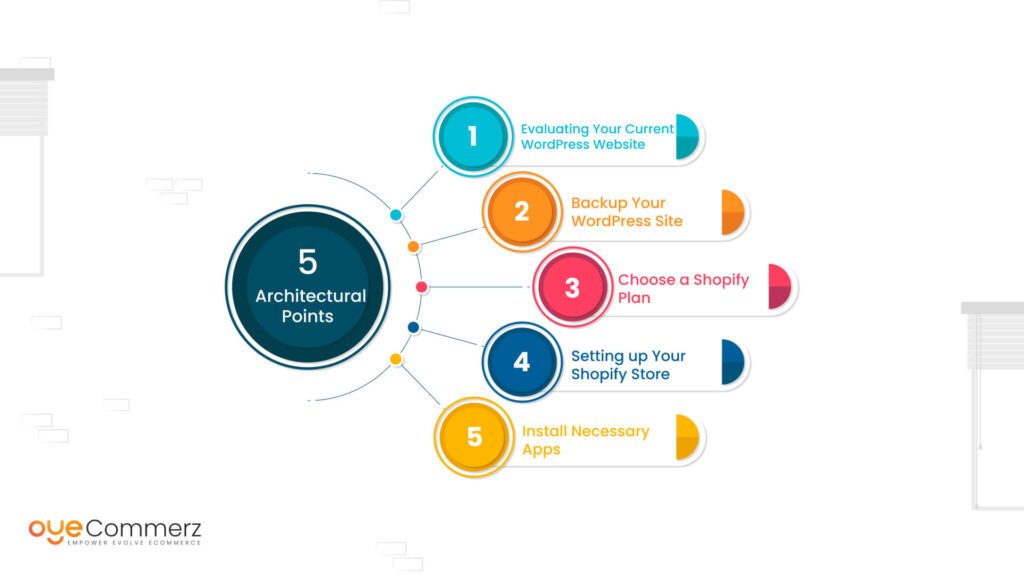Shifting from WP to Shopify is an promising step toward streamlining your e-commerce processes. As businesses expand, selecting a platform that supports scalability, UX, and customization becomes crucial. Shopify is widely recognized as a favorite for e-commerce professionals, offering superior flexibility, data protection, and ease of use. In this guide, we will delve into the transformative impact of this migration, discuss the advantages, and provide practical tips to ensure a smooth move.
1. Top Reasons to Transition from WordPress to Shopify
The combination of WordPress and WooCommerce, has served countless e-commerce platforms. However, as companies scale, challenges like reliance on plugins, security vulnerabilities, and complex setups often obstruct growth. Shopify, specifically created for e-commerce, addresses these issues with an all-in-one, intuitive platform. Real data back this shift—Shopify powers over 4.4 million stores globally, with a documented 10% increase in sales conversion rates for numerous merchants after migration.
2. Key Benefits of Shopify for E-commerce Success
Shopify’s powerful platform is tailored for expanding brands. Its standout features are:
- Seamless Customization: Shopify provides over 80 expertly crafted themes.
- Integrated Tools: Features like Shopify Payments and integrated SEO save time and effort.
- International Expansion: Currency versatility and localization features empower brands to expand internationally.
Additionally, Shopify boasts an availability percentage of 99.98%, guaranteeing your store is always operational.
3. Getting Ready for Your WP-to-Shopify Transition
Before migrating, evaluate your existing setup. Analyze product data, client information, and search engine rankings. Resources such as Shopify’s Migration Kit or third-party solutions help ease the transition. Develop a detailed strategy, ensuring all assets—item details, media files, and articles—are optimized for transfer.
4. Data Migration: A Critical Step
Data migration forms the foundation for a smooth platform switch. When migrating from WordPress to Shopify, focus on:
- Inventory Details: SKU, item summaries, and groupings.
- Customer Data: Emails, order history, and preferences.
- Search Engine Considerations: Retain meta tags, URLs, and forwarding paths to avoid SEO losses.
Use apps like LitExtension to streamline data transfer while minimizing errors.
5. Customizing Your Shopify Store
Post-migration, customizing your Shopify store helps it reflects your business identity. Take advantage of Shopify’s intuitive page builder to create layouts with WordPress to Shopify benefits ease. Shopify's templates are optimized for all devices, providing a seamless UX across platforms—a critical factor, given 74% of e-commerce traffic comes from mobile users.
6. Maintaining SEO During Migration
SEO is vital for preserving your online presence during migration. Shopify excels in SEO with clean URL structures, built-in optimization tools, and seamless blog integration. Ensure:
- Implement 301 redirects for existing links.
- Enhance updated content with targeted phrases.
- Leverage plugins like Plug in SEO to track analytics after the switch.
7. Essential Tests After Migrating to Shopify
Once the migration is complete, run detailed checks.
Review: - Website speed (Shopify delivers faster speeds compared to WordPress).
- Functionality of payment gateways Shopify setup and customization and checkout processes.
- Adaptability across devices.
Quality assurance guarantees your store delivers a seamless shopping experience from the start.
8. Case Study of a Successful Migration
An example of effective platform switching is Gymshark, a sportswear company that transitioned to Shopify. Post-migration, the company saw a 60% boost in mobile sales and reduced site downtime. This showcases the potential of Shopify in enhancing online business success.
9. Overcoming Common Migration Issues
Migration comes with challenges, such as data integrity and adjusting tailored features. However, Shopify’s extensive assistance and third-party experts make overcoming these hurdles manageable. Collaborating with qualified Shopify developers helps guarantee a smooth transition.
10. Making the Switch: The First Step Toward Success
Switching from WordPress to Shopify represents a strategic decision to e-commerce. By focusing on growth, streamlining operations, and enhancing the customer experience, Shopify empowers businesses to succeed in competitive markets.
Conclusion
Transitioning from WordPress to Shopify is a strategic move that can greatly enhance your e-commerce success. With a well-structured strategy, the appropriate resources, and expert support, you can achieve new success milestones.
Ready to make the leap? Reach out today to learn how our Shopify migration services can transform your online store. Contact us now, or ask yourself: Can your business afford to miss out on Shopify’s growth potential?
